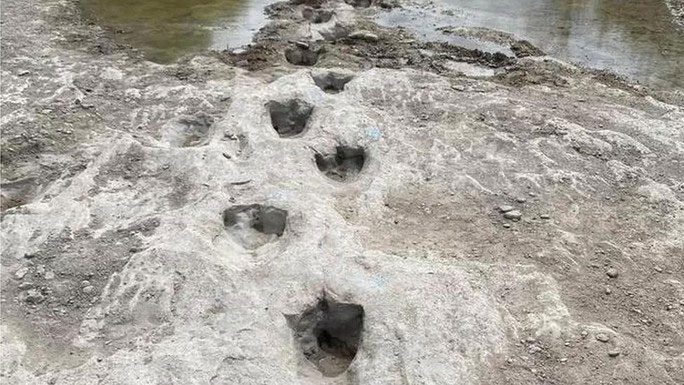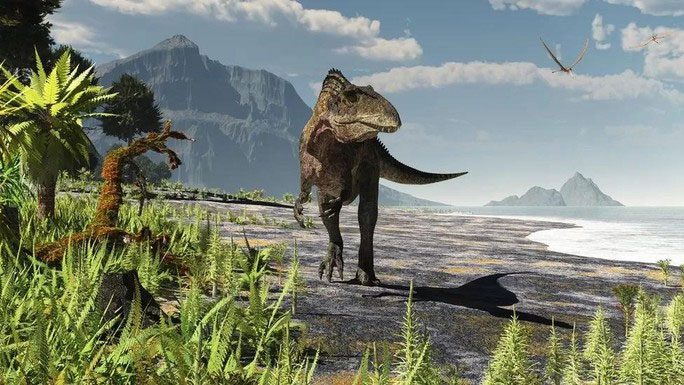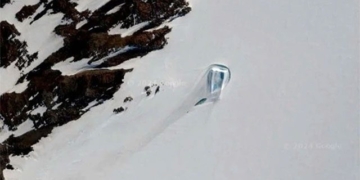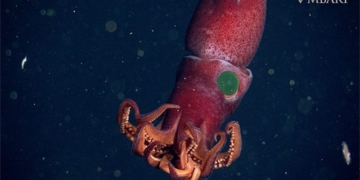The hot and dry weather in Texas, USA, is revealing a series of rare fossils, the “ghosts” of an ancient monster battle.
According to BBC, a series of deep footprints in the rock have emerged after 110 million years of extinction. They belong to Acrocanthosaurus and Sauropodseidon, two species of creatures that once dominated the land that is now the western United States during the dinosaur era.

The terrifying three-toed footprints of the shark-toothed Acrocanthosaurus – (Photo: BBC).
“In a way, it’s almost like a treasure hunt,” said Paul Baker, the communications director of the Dinosaur Valley State Park, where the fossils have recently emerged, in an interview with CNN.
According to Baker, never before have so many dinosaur tracks been discovered at the same location. Previously, mud and wet conditions had concealed and preserved them. However, the hot and dry weather has led to a natural excavation.

“Portrait” of Acrocanthosaurus – (Photo: BBC).
Based on the traces, the three-toed Acrocanthosaurus – part of the Carcharodontosauridae family, also known as “shark-toothed dinosaurs”, roamed the area.
Acrocanthosaurus bears a striking resemblance to the Tyrannosaurus rex. Its shark-toothed family belongs to a larger group known as “theropod dinosaurs” alongside the T-rex.
With its terrifying teeth and sharp claws, Acrocanthosaurus was one of the apex predators of the Cretaceous period. The largest recorded individual measured over 11 meters long and weighed more than 7 tons.
In this land, Acrocanthosaurus even hunted Sauropodseidon, a species belonging to the Sauropod family, known as “lizard-footed dinosaurs”, which were the largest but gentle giants in the dinosaur world.
The Sauropodseidon excavated in the US measured approximately 30 meters in length, stood 6-7 meters tall, and weighed about 40-60 tons.
While fossil footprints may not seem as “impressive” as full skeletons, they are exceptionally valuable to paleontology.
They serve as a “negative film” that allows scientists to learn detailed information about the creature’s appearance, skin texture, and how it moved and hunted. This contributes to a more accurate reconstruction of these extinct monsters.


















































